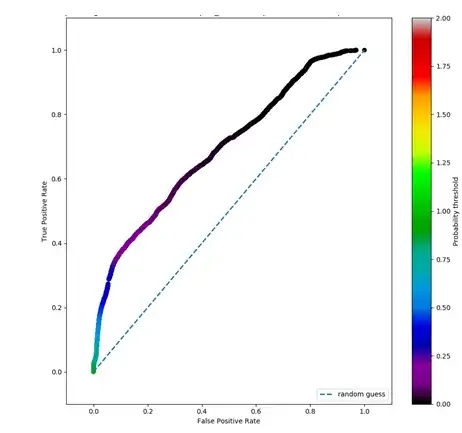Problem definition
Suppose I want to test if a classifier is of any use in telling if a person is currently affected by a disease. I have trained my classifier on a training set and now I have its confusion matrix for all probability thresholds of belonging to the positive class. Note that both datasets are very unbalanced because most of the people are actually healthy.
I can then plot the ROC curve: on wikipedia I find that the bisector of the ROC spaces is equivalent to a "random guess".
My classifier in most of the ROC space is above the bisector

Questions
My questions are then:
- Am I able to reject the null hypothesis (is my classifier of any use)? If not how could that be done properly in a binary classification problem (feel free to provide references if the answer is too big)?
- I'm feeling I can't because I don't have "error bars" on the ROC curve: if I train several classifier with the same parameters but different train/test splitting would it be sufficient?
- Is then the null-hypothesis rejection valid only for the probability thresholds where the ROC curve (together with the error bar described in the previous point) is above the ROC space bisector?